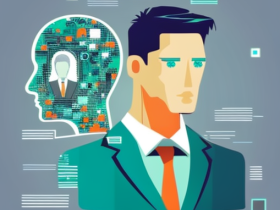In the ever-evolving landscape of artificial intelligence, neural networks have proven their mettle in tasks like image classification, language translation, and even mastering complex games. However, they often stumble when it comes to tasks requiring human-level abstraction. Catching a ball mid-air or juggling multiple balls, feats that come naturally to humans, demand an intuitive grasp of the physical world’s dynamics.
Unlike humans who effortlessly predict trajectories, machine learning models lack these basic intuitions about the physical world. Even after thousands of examples, a neural network may never truly comprehend human-level abstraction. This shortcoming stems from their struggle to learn fundamental symmetries and conservation laws.
A Promising Solution: Lagrangian Neural Networks
Addressing this challenge, Sam Greydanus, a resident at Google Brain, in collaboration with peers Miles Cranmer, Peter Battaglia, David Spergel, Shirley Ho, and Stephen Hoyer, has published an intriguing paper. This paper offers fresh insights into Lagrangian neural networks (LNNs) and why they are pivotal in bridging the gap between machines and nature.
Understanding Lagrangian Neural Networks (LNNs)
The Double Pendulum Analogy
To unveil the secrets of nature’s underlying dynamics, the authors employ a captivating analogy involving a double pendulum—a pendulum attached to another pendulum, renowned for representing chaos in motion.
In this analogy, a physical system is defined by coordinates (x_t=(q,q˙)). For example, a double pendulum can be characterized by the angles it forms and its angular velocities.
As a double pendulum swings, the coordinates on its body move from one point to another—an intuitive concept. However, what induces chaos is the multitude of possible paths these coordinates can take between the initial (x_0) and final (x_1) positions.
Lagrangian mechanics elucidates that any action can be expressed as a function of potential energy (position-based energy) and kinetic energy (motion-based energy). This action is expressed as follows:
The intriguing property of ‘S’ in the equation lies in the fact that, among all the conceivable paths between x_0 and x_1, there exists only one path that results in a stationary value of ‘S.’ This path is the one that nature consistently follows—the principle of least action.
Understanding the conservation of energy laws allows us to define the action of the body in question, ultimately enabling us to predict its path with remarkable accuracy.
However, neural networks often falter in grasping the concept of energy conservation. This is where Lagrangian Neural Networks (LNNs) step in to fill the void.
The Implication of LNNs
LNNs hold immense potential, especially in the domains of robotics and reinforcement learning. These networks can comprehend the conservation of energy solely from data, opening up new avenues for research and application. With LNNs, the authors have successfully intertwined the fundamental principles of nature with artificial neural networks.
The Significance of LNNs
Honoring a Mathematical Pioneer: Joseph-Louis Lagrange
Joseph-Louis Lagrange, a polymath born in Italy in 1736, left an indelible mark on the world of science and mathematics. By the age of 20, he had already introduced the principle of least action in the dynamics of solid and fluid bodies. His work on finding the path taken by bodies, no matter how chaotic their movements, still resonates in cutting-edge fields like deep learning.
While the fundamentals of mathematics are timeless, the application of these principles to enhance neural networks represents a fascinating idea. The universe’s models are scrutinized for their symmetries during the formulation of a model. These symmetries correspond to the laws of conservation of energy and momentum, concepts that neural networks struggle to grasp.
To address these shortcomings, Greydanus and his peers introduced Hamiltonian Neural Networks (HNNs) last year. These networks can learn invariant quantities directly from pixel data. Taking a step further, Lagrangian Neural Networks (LNNs) can learn Lagrangian functions from data, without the need for canonical coordinates, a distinction from HNNs.
In a comparative analysis, Lagrangian Neural Networks emerge as frontrunners when pitted against other related work. Their potential to revolutionize the scientific community leaves us eagerly awaiting further breakthroughs.








Leave a Reply